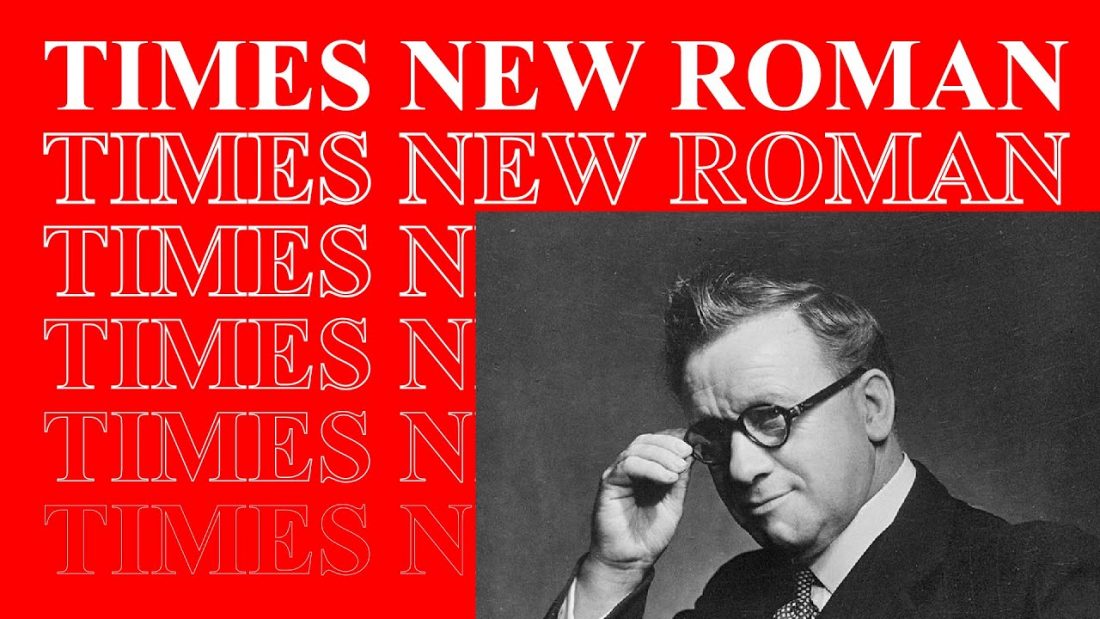
How The History of Times New Roman Fonts?
Times New Roman Font – On this post, we will describe the inventors and the history of Times New Roman font. Talk about Times New Roman font is probably most users already know Microsoft Word application which is also used as a standard of letters typing in the world and it is known from various professions.
This font was designed by a British named Stanley Morrison. He was born on May 6, 1889 in Wanstead, England. Stanley grew up as a figure who has no knowledge about printing, but the knowledge that a lot in terms of typographic printing is obtained from a member of The Pelican Press.
Because of His love for the Lord, it makes him reading religious books a lot, even the first typography work is also intended for the church. Once out of The Pelican Press, he worked for Cloister Press in Manchester. Many best designs produced when he worked at this company.
During approximately 30 years (1929-1960), Stanley Morrison, a letter consultant to The Times newspaper in London, England. As a letters consultant, in 1931 he told the Times, “The Times is a newspaper that has had its own customers, we require a letter that is not the same with merchandise in general, letters should be basically good, but it also reflects the strength of the line, consistency, and economical for The Times “.
Because his words, October 3, 1932 became a day of marketing of the letter “Times “kind to the masses, because on that day that it was the first time The Times newspaper printed using typeface named as the newspaper itself. Stanley Morrison was not the only person who was behind the screen of the success of the letter. He also assisted by his friend named Victor Lardent as the person who drew the design of this letter.

The letter named Times is rapidly becoming very popular at the time, widely used in newspapers, magazines, and books company’s annual report. This letter listed the license to the Monotype Corporation in England, but also to a company registered in the United Linotype license, because The Times newspaper many register the license of its products to the Linotype. Finally, in 1945, The American Linotype Company registered the trade name “Times Roman” separately, not as a part of The Times or Monotype. This is where there is a difference of a name to use this letter in the computer. Linotype and companies under license, such as Adobe and Apple Macintosh using the name “Times Roman”, while Monotype with companies under license, such as Microsoft uses the name “Times New Roman”.
In ’80s, redesigning Monotype Times New Roman and claimed that the letters in the redesign is better than Times Roman is owned by Linotype. Because not to be outdone, the adjacent time periods, Adobe, Linotype also launched a new series of the Times letters, which of course they claim the new letter also better than the letter of Monotype. In fact, most or perhaps all users of this letter will not notice or will not even question the differences between them even though the letters are printed very clearly with a size of 10 pt in high resolution 300 dpi.
Regardless of the various conflicts in above, it is evident that the Stanley Morrison has managed to create a good letter with its own trademark so that this typeface is remembered and used by many institutions today. He died on October 11, 1967 in London, England.
The types of fonts made by Stanley Morrison:
Fonts: Times ™ (1931), Times ™ Eighteen (1931), Times ™ Ten (1931), Times ™ Eighteen (1931), Times ™ Central European (1931), Times ™ Central European (1931), Times ™ Ten (1931 ), Fonts: Times ™ (1931), Times New Roman ™ (1932 in collaboration with Victor Lardent).



